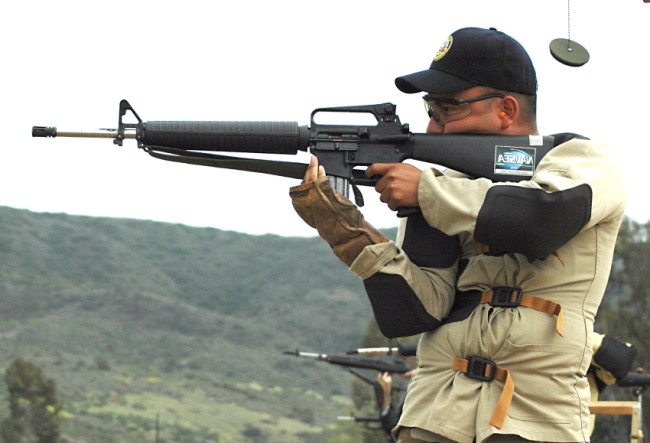Best Stocks For Your AR15
When you build your custom AR, you get to choose the parts that suit you, and make your gun the best that you can own. You can choose calibers, barrel lengths, uppers, magazines, handguards and so on, but the one part that people sometimes don’t fully consider is the stock. This is one of the major components that will get your rifle into the right firing position, and maintain comfort. In short, you want to pick the right stock for your weapon and purposes, so let’s have a look at some of your options when choosing a stock.
The first thing that you need to consider is what you’re going to use your AR Rifle for; if you are looking to building a hunting or sniper rifle then you may want a stock that is geared towards comfort and control for long range shooting, while you might want a folding stock for close-quarters action. Remember, each application has a stock that is ideal for it, and features that make it right for you and your shooting style.
Materials & Construction
AR15 stocks are almost exclusively polymer-based, offering the best of weight saving with strength and durability but, because they are molded and easy to manufacture, there are a great number of design variations available. The standard AR15 stock – which is still available, by the way – was a solid workhorse, but regarded as a fairly wide option could only really be improved on. And that is what after-market manufacturers have done. Today, we even see a huge range of skeleton stocks that offer total support while being lightweight and a good fit against your cheek.
Fixed or Adjustable?
Adjustable stocks – sometimes called ‘collapsible stocks – are by far the most popular option among the AR customizing community, though some actually prefer the fixed stocks, but again, this tends to be dependent upon the use to which the gun is put. Adjustable stocks tend to have between four and eight ‘stops’ at which they can be set, and have the advantage of being settable to your particular frame. However, fixed stocks are usually sturdier and cheaper so you need to offset the need to be able to adjust your stock against cost and the threat of flexibility and movement in the stock. That might be a problem under sustained firing modes.
Weight
Usually allied to the form of the stock – fixed or adjustable – weight is a strange one; No one really wants a heavy weapon, but a weighty stock can help add balance to the rifle and make it easier to swing into position when you need it in a hurry. Many of the modern stocks are skeleton in form, having only the basic structure to allow you to pull it into your shoulder, but you may find that these are extremely lightweight, affecting the overall balance of the gun. This might become more of an issue if you have more equipment – such as suppressors and flashlights – attached near the front end that increase the weight.
Length Issues
Plainly, the stock is a major contributor to weapon length and the use you intend for your rifle may well impact the length, and the product you finally choose. Many stocks that can be retrofitted may be significantly shorter than the standard stock, and if you are building something that is length sensitive – such as an AR Pistol – then you will want to keep the length down. Conversely, if you are creating a hunting weapon, a longer length may become an advantage with balance and control.
Storage facilities
Many stocks now come with an accessible internal area that becomes a handy storage for all manner of items such as batteries for your optics, lights, and lasers, or maybe even a couple of rounds of ammo that may save your life.
And, Bump Stocks
Though they are no longer legal in the U.S., we couldn’t have a detailed discussion about stocks without mentioning these controversial additions. A bump stock is a part that allows the stock section of a rifle to adsorb some of the recoil from a shot, meaning that the barrel effectively moves less and is in position for another shot to be taken quickly. Bump stocks effectively allow a semi-automatic rifle to be used like a fully automatic rifle, and can allow a rifle such as an AR to discharge at a rate of between 400 and 800 rounds per minute!
Stocks are an important feature on your AR and doing a little research will help you find the perfect accompaniment for your chosen style of customized weapon.

